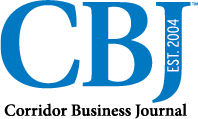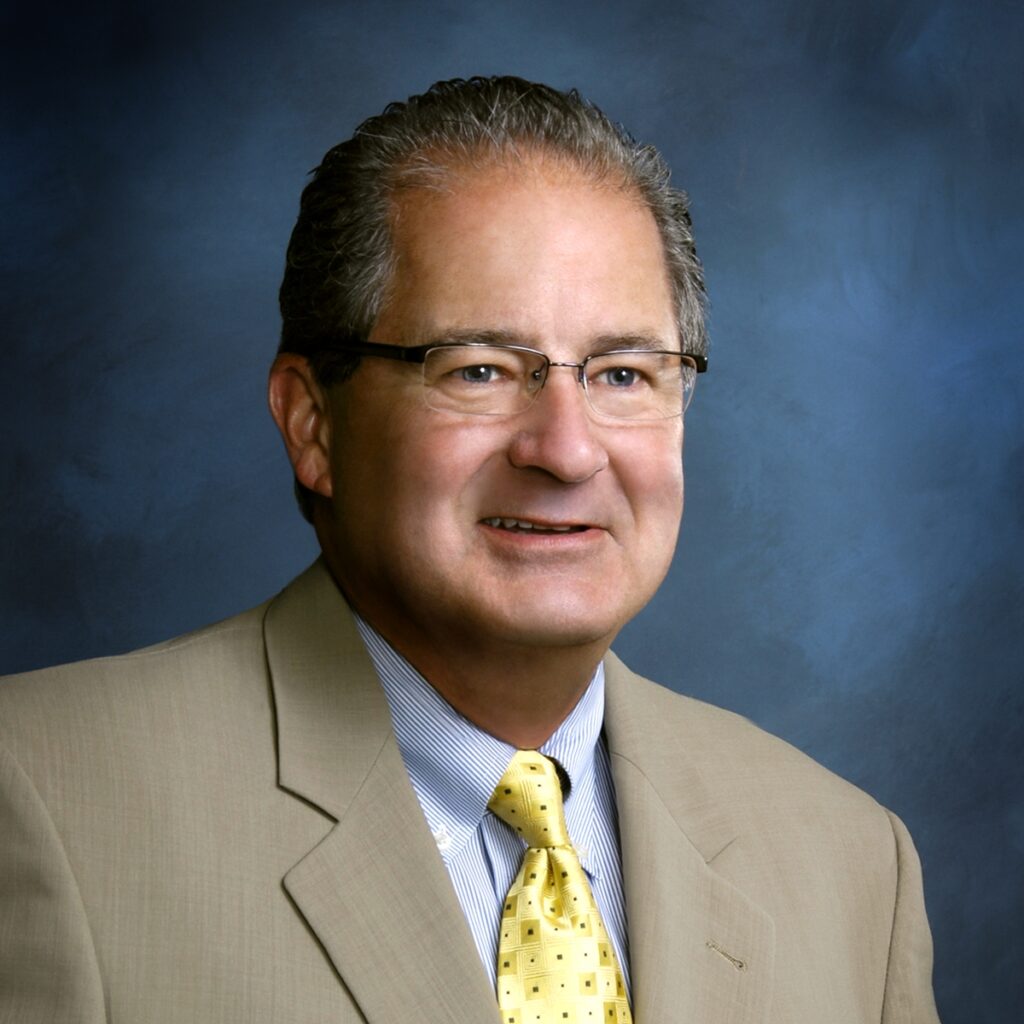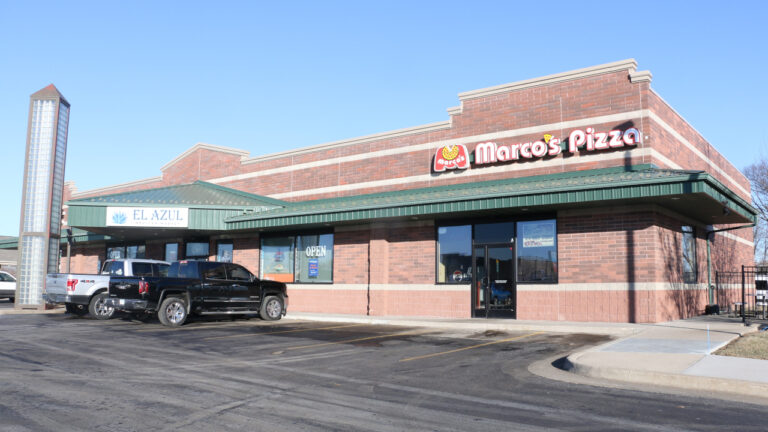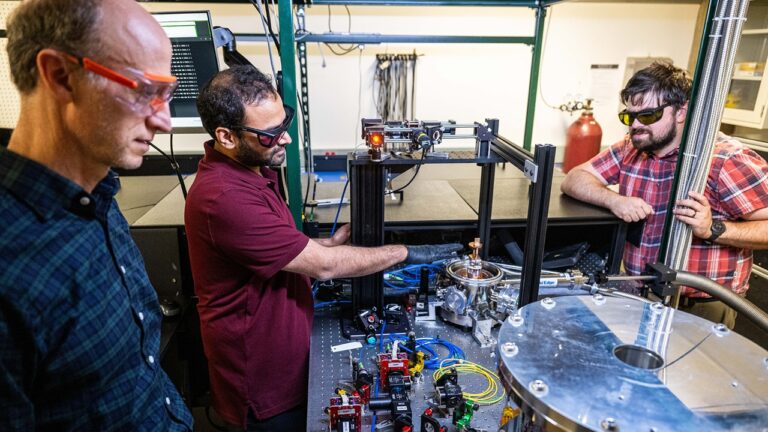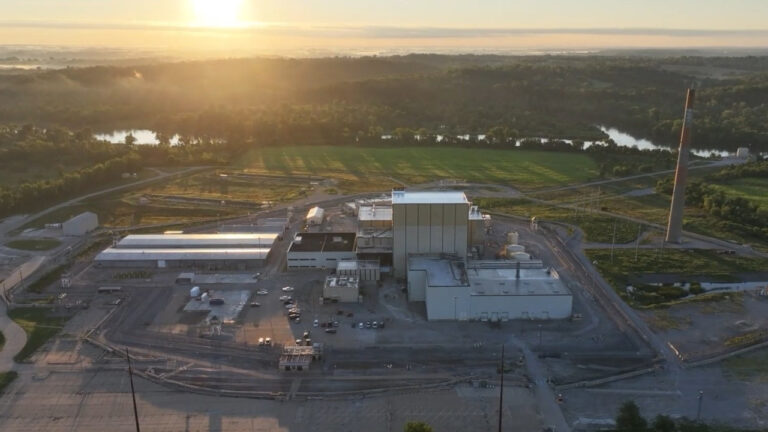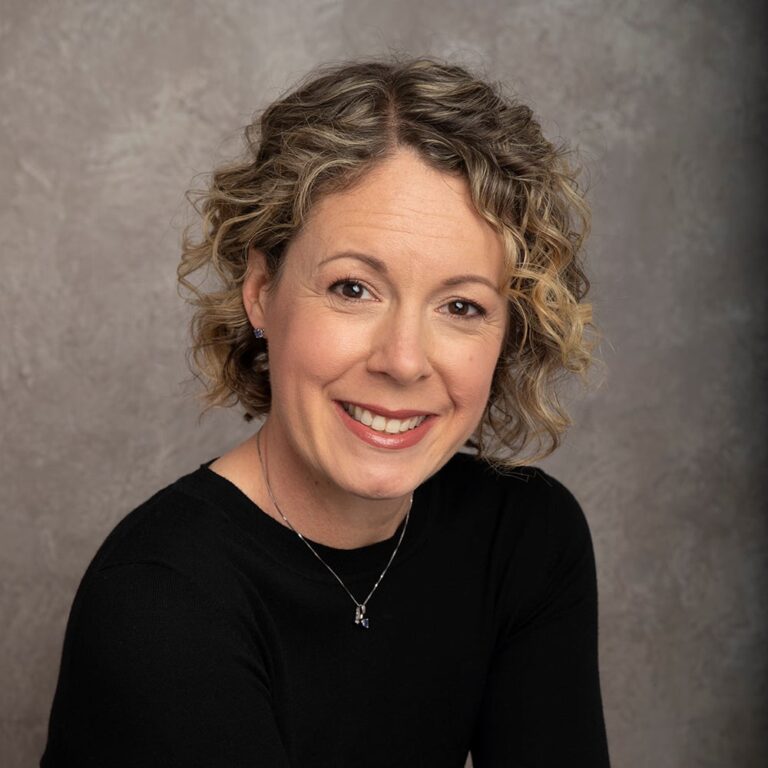Charlie Rohde is the president of King’s Material and Dakota Red Corporation, a legacy company that has been meeting the Midwest’s construction needs since 1882.
Charlie sits down with me to discuss the history of King’s Material, his father’s history and legacy, what his experience has been like as president of the company, and what the next generation of King’s Material might look like.
I learned a lot, and I think you will too.
Sponsored by MidWestOne Bank, this is the latest edition of the CBJ’s Real Success with Nate Kaeding and notable Iowa business and cultural leaders.
Nate Kaeding: So this must be a busy time of year for you all!
Charlie Rohde: Absolutely. About a month and a half ago, all hell broke loose. The weather warmed up and we started pouring concrete. You could see the contractors just pounce back into the projects and we had a very busy start to the year. If we didn’t have rain, we would be doing even better right now.
Does the rain really throw things off for you?
Charlie: It just delays it. It requires us to do more work in a shorter time for people to catch up. It just requires a little more effort on everyone’s part.
Of course, this isn’t your family’s first rodeo. You guys have been at this in the Corridor region going on 142 years in some capacity.
Charlie: Correct. Years ago, when we still kept track of everything on paper and I was working for my father as a young salesman, the assistant manager of the Ready-Mix division would call and say, “Why is your yardage down?” I said, “Well, did you look out the window and see it raining?” There weren’t many excuses that he would accept.
King’s Material was founded in 1882 dredging sand out of the Cedar River to make plaster. Walk us through that process and also, over time, how has this business evolved?
Charlie: Mr. King, who founded the company, saw a need for plaster in the rapidly growing city. He was the son of one of the founders of the west side of Cedar Rapids, Kingston. From my understanding, it was a heck of a lot of hard work. They had these old steam engines out on the river to power these dredges up and down at that time.
We had a horse barn that was used to house the horses that pulled the wagons full of the plaster out to the homes and businesses. It was located right at the west end of the Quaker Oats railroad bridge. If you look closely, you can still see some of the concrete walls where we used to pull the barges full of sand up.
Going back to the timeline: 1935 was the first known sale of Ready-Mix concrete in the Cedar Rapids/Iowa City area. What is Ready-Mix concrete, and how did that change the construction world?
Charlie: Concrete used to be mixed on-site. There would be small mixers. Several years ago, I had the opportunity to buy this very large, old, wood mixer where they actually mixed all of the concrete for the Roosevelt Hotel. I really didn’t have anything to use it for, so I passed on the opportunity.
Ready-Mix was where we pre-measured all the material. You have a bin full of cement, a bin full of sand, and a bin full of rock, and then you can open the gate on the bottom and it falls down into a scale. It’s very accurate. Today, we’re accurate to within five pounds by letting it free fall into the scale. Then it would go into the back of a mixer truck where the mixer for the concrete is on the back of the truck. Those are the big red and yellow mixers, and as they’re coming down the street, they’re blending your concrete together. We do add a lot of water to it to get it in there. Then, by the time it gets to the job site, it is ready. It’s already mixed concrete, but it got shortened by the industry to Ready-Mix years ago. I’ve got a picture in my office of Mr. Loomis standing on the scaffold six floors up at Quaker Oats and one of the first Ready-Mix trucks backing up to lift the concrete up that high.
Your family story really started in 1978, when your dad purchased the company. What do you remember about that time and his professional life prior to acquiring the company?
Charlie: My father was born in Sioux Falls, South Dakota, which has a little bit to do with the name of our holding company. He was a World War II navigator, went through the Iowa State engineering program on the GI Bill, met my mother two days before he left for World War II, came back, worked for Standard Oil Company of America for a very short time, and then he worked for Johnson Controls and he was placed out in Cedar Rapids to open the Eastern Iowa office for Johnson Controls as a young mechanical engineer, which he loved.
One day, one of his customers said, “You’re buying my mechanical contracting company.” Dad said, “What, with $8 in my pocket and my firstborn?” And they said, “Well, we’ll make it work.” But dad had an opportunity, and he became a successful mechanical contractor doing a lot of industrial work and a lot of water treatment plants on both ends of town and around the Midwest.
When I was in junior high school, there was a lot of conversation in the kitchen. Dad had an opportunity to buy a little company in Cedar Rapids called Midland Industries. They made steel forgings, and he happened to share the same attorney and the same accountant. So, for five years, my father was in the steel forging business before we were bought out. We weren’t advertising to be for sale, but we were approached and had built a successful enough business that [the company was] a desirable purchase.
Did he ever tell stories about where he got that entrepreneurial itch, or stories about becoming a businessman?
Charlie: I think it was instilled in him when he was a young man. His grandfather and his father were merchants out in South Dakota and, at the time, they probably would’ve been equivalent to Robert Armstrong in Cedar Rapids. They had a big department store in downtown Sioux Falls. The crash of 1929 put quite a damper on that, and my great-grandfather had a business partner that had plummeted the partnership $300,000 into debt. My grandfather spent his entire life paying that back rather than filing bankruptcy. My father finished paying it back in the 1960s.
When my dad was born, things were quite good. Then, things were quite bad. There are a lot of stories about he and his buddies having to go out and shoot geese in the afternoon so they had something for the dinner table at night. As a child, he saw the ups and downs. When I came into the business officially after driving the truck for a few years in 1982, we didn’t know we could lose money that fast. But my father kept the company alive.
After dad sold Midland Forge in 1976, we went back into the mechanical contracting business again, but the main owner of King’s needed to sell to get his wife into a different climate for her health. It was a good transaction. We always said that the best transactions are where everybody feels just a little bit screwed.
Dad loved the construction industry, and when he was a mechanical contractor, he was the most happy in his work career. He had a great sense of accomplishment from seeing something as an idea on paper to a raw piece of dirt to being able to process all the drinking water for a community.
What assets did King’s have in 1978 when your dad purchased it? Were there trucks or a physical location? What did the business look like at that time?
Charlie: At that time, we had three old Ready-Mix plants. We had one on the original site at the west end of the Quaker Oats railroad bridge. We had one downtown on Third Street SE. A few of the professional people in Cedar Rapids really wanted our trucks to quit rumbling through downtown. Then we had a location out in Marion, which had been a combination before we bought the company. There were two that had merged. There was King’s Concrete, which was on the west side, and there was the Builders Material Company on the east side. They emerged to become King’s Builders Material. We changed it quickly back to King’s Concrete and, shortly thereafter, would change it to King’s Material.
Was growth always on your dad’s mind, or was he more interested in getting into the business and feeling it out first?
Charlie: That’s how my dad operated. He always had his eye on the bottom line and how we were doing and how the people were doing and quality. My dad had a couple of great mantras with us young salespeople. Simple things like: “If you screw up, fix it and tell me what you did wrong. Tell me how you fixed it and then, if we have time, tell me what you were thinking when you made that decision.” That was a fairly interesting way to grow up and also be in business with him.
It started out very well when he bought it in 1979. We had a good year and a half before we hit that recession. Normally, we have about six to eight months before we’ve noticed that the economy has gone down in our industry. It went down immediately. In 1981, we had 49 concrete mixers, but on the busiest day, we ran 11 of them. We lost all kinds of our newer or younger drivers at that point, and it took a long time to build them back up as the economy improved.
It taught us a lot of lessons about being lean. I have one story: Dad didn’t like the phone system we had in the building because there was no privacy on it. Anybody could listen to your calls. I got a price to buy a new phone system for not a lot of money. It was about $5,000 and it would’ve paid for itself in 14 months. I went over and sat down, I put two sheets of paper with the numbers on them in front of my father, and he said, “That’s great, but no.” I said, “What do you mean ‘No’? That’s a 14-month payback, dad.” He said, “We don’t have the money. You’re going to have to wait.”
Cashflow was very important. I had the water shut off and the pipes blown out. The electricity got shut off. We were cutting corners to save every dime we could. We were taking tires and batteries out of the trucks that we weren’t running. We were pretty darn lean.
What does your future look like in the business? Have you thought about family legacy within the business?
Charlie: I just had my 65th birthday, so there are a lot of questions floating around right now. “What are we going to do with Charlie? What are we going to do when Charlie is not sitting there?” I try to add a lot, because I’ve been doing this for a while, but I try to approach it a certain way. I’ll say “I really like what you’re doing. I think it’s a great idea. I tried it one time and for some reason, it didn’t work. Do it! Just don’t do it the way I did, where it didn’t work. Do it another way.” So you try and coach. I think it’s natural to try and help or guide the people that are following you.
You have kids of your own in the business, correct?
Charlie: I do. I have a daughter that’s in a sales position in our Clear Lake operation. There’s also my senior business partners: my brother-in-law, Jim, who manages the Hawkeye division and a couple of the Midland shops, although Jim is effectively retired, and my sister Sarah, who manages our family foundation, which mom and dad were good enough to start quite a while ago.
What do you remember from when you stepped into the role as president?
Charlie: Dad had a valve surgery up at Rochester and, after that, he was actually better than he thought he would be. So his advisory capacity was an awful lot of coaching for Jim and I at that point. We had a lot of learning to do in terms of how to have two separate businesses in town and, in some cases, compete. He did a lot of refereeing over the years also, but it was a good opportunity. Hawkeye was a good additional market for us. They were in the Ready-Mix business also down in Iowa City. Jim built a pretty darn good company quickly and then he wanted to go and do other things. So we were a logical buyer.
What’s the biggest difference between the businesses back then and today?
Charlie: The market has changed quite a bit. I remember, right before I officially started, we were pouring the old beautiful staircase in the middle of the old downtown library where TrueNorth is now. We were ascending over three yards at a time and it was being placed into a half yard bucket. That 40-yard pour took something like 14 hours. Yesterday, we had one of our customers pour a floor that was 500 yards in about three and a half hours. We are not always innovators, but I think we’re very early adopters. A lot of the growth has been on the products side of our business.
What does King’s Material look like in the year 2030?
Charlie: We are opportunistic. If we can add something to our portfolio, we do. If not, we try and work with what we have and make it the best we can. My father used to say “We’re not about to make rubber ducks,” but what else can we make out of concrete? You can do a lot of things with concrete.
People are looking at my age right now and going, “OK, well, I haven’t found the pill to make me live forever yet.” We’ve always had some contingency plans in place, but we’re trying to make them a little formal right now. We do have the next generation coming along. My niece runs our Coralville store. My nephew is vice president of our Mason landscape division. My daughter is in the office up in Clear Lake. Katie grew up going out on Saturday mornings seeing contractors and watching it. One day, my phone rang. “Hi daddy!” I said, “Katie, where are you? I thought you were in the conference room.” She said, “Dad, look out your window.” She’s 75 feet in the air up on top of the plant with a mechanic waving. The kids are close to ready.

